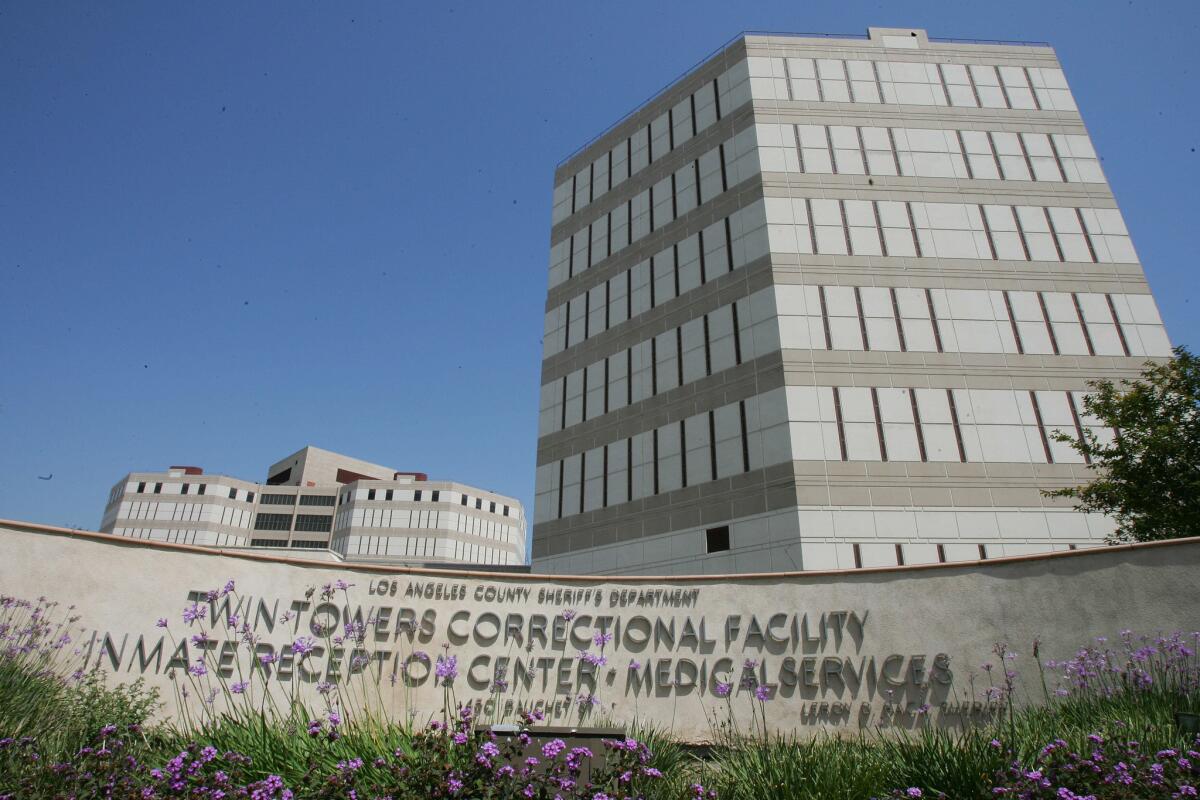Foot-dragging on criminal justice reform

- Share via
Two years ago, California overhauled its criminal justice system by shifting responsibility for many felons from the state government to the counties. There is no denying that the change was abrupt. Gov. Jerry Brown signed into law the Public Safety Realignment Act, also known as AB 109, on April 4, 2011, and followed up with a companion bill that fleshed out many of the funding details in June of that year. Counties then had just three months to prepare their jails, their law enforcement agencies and their probation departments to be ready for the Oct. 1 implementation date, after which defendants convicted of lower-level felonies were sent to jails instead of state prisons, and felons released from prison after serving sentences for lower-level crimes came under the supervision of county probation officers instead of state parole agents.
With realignment underway, the California Department of Corrections and Rehabilitation sometimes delayed too long before giving counties notice of felons who were coming home, catching probation departments off-guard and leaving them to scramble to ensure that dangerous people were accounted for. The state prisons, packed with inmates suffering from severe mental illness, released to counties prisoners who were too mentally disordered to be properly supervised by probation officers without specialized training.
It was a lot to deal with in a short period of time. Courts and county governments — boards of supervisors, sheriffs, district attorneys, chief probation officers — deserve some sympathy for the magnitude of the task that began two years ago.
But that sympathy comes with limits. The need for criminal justice reform and a reduction in the prison population has been apparent for decades, and county officials have long known that they were an integral part of the problem and must become a major part of the solution. The solutions were broached, discussed and widely understood for nearly a decade before AB 109: Make sentencing more rational; provide drug rehabilitation, mental health treatment, education and job training to inmates in prison and jail continue it when they have been released to their home communities, and pay for it with savings realized from a lower population of incarcerated people; provide corrections and rehabilitation for lower-level crimes in the community where offenders live and to which they will return. Numerous studies show that corrections handled in the low-level offenders’ communities have more successful outcomes at lower costs.
Realignment of prisoners to the local level, using substantially these guidelines, was very nearly adopted during the Schwarzenegger administration, when the prison population peaked. But the different local agencies, prosecutors and courts all bickered and dickered over the details, killing any agreement. With federal court orders in place to eliminate the unconstitutional overcrowding, and with the players well aware of the solutions but unwilling to implement them, the time for a drawn-out deliberation and the chance for careful planning was over. It became apparent that the only two ways to begin changing the broken corrections system were with a direct order and deadline from the federal court, or with “overnight” legislation based on years of discussion and research. Both came to pass.
Los Angeles County, especially, was unprepared for the stress test, with jails in which sheriff’s deputies were accused of beating and otherwise abusing inmates, a Probation Department with a large percentage of officers involved in their own disciplinary and even criminal proceedings and a virtual revolving door of top leaders, a Board of Supervisors unhappy about losing their former privilege of sending offenders out of the region and, importantly, deleting the costs of housing and supervising them from the county budget.
Two years later, the county remains woefully behind the curve. Millions of dollars of state AB 109 funding for drug rehabilitation and other community corrections programming remain unspent. The Board of Supervisors has failed thus far to empower the sheriff to free up jail space for convicts by releasing accused nonviolent defendants who are locked up merely because they can’t post bail. The Los Angeles County Superior Court, prosecutors and defense lawyers have rejected the opportunity to sentence AB 109 convicts to a portion of their terms in jail and a portion under mandatory substance abuse treatment and education in their communities — an approach known as “split sentencing” — despite evidence that such programs have the most chance of succeeding and of keeping offenders from breaking the law again.
Los Angeles County supervisors and judges have demonstrated their share of resentment about their responsibilities under AB 109, but so far have merely shrugged at the opportunities — funding for community rehabilitation, selective pre-trial release, split-sentencing — that the law provides. Leaders in other counties have used the last two years well. Los Angeles County leaders have used them poorly.
In adopting realignment, California did make two errors: It failed to allocate enough funding for data collection and analysis, leaving counties insufficiently able to quantify what they have and have not achieved; and it provided counties funding without conditions or incentives. The state is now looking at new incentive funding under which counties would be rewarded based on the results they achieve in lowering the number of felons they send to the prisons. It’s a smart way to go.
But it may not be enough for Los Angeles County supervisors, who continue to sit on rehabilitation funding while last month leasing space in another county to house 500 more inmates far from home and far from community rehabilitative services. If this county’s government were a criminal offender, corrections officials would say it is in need of a short and swift punishment to get its attention, refocus on reality and consider its options for change.
More to Read
A cure for the common opinion
Get thought-provoking perspectives with our weekly newsletter.
You may occasionally receive promotional content from the Los Angeles Times.










